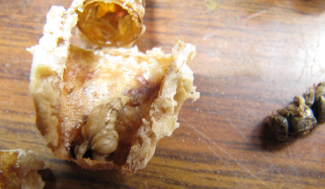
Viruses are the smallest living beings. They are made up of a single genetic material protected by a coating. They survive by entering the cells of other organisms and replacing their genetic material with their own, so that they stop functioning and put all their systems to work making new viruses, leading to their death.
They infect all types of living beings. They are extremely small, and can only be seen with powerful electronic microscopes.
A good number of viruses have been described in bees all over the world, leading to bee deaths. Unfortunately, there is no effective way to fight them. When they appear, the only option is to try to eliminate the causes (malnutrition, varroa mites...) and to change the queens of the affected hives as soon as possible to remove them from the production group.
They vary by season, and are much more common in summer and autumn.
They are closely linked to the presence of varroa mites, which both spread them with their bite and also weaken the immune system of bees infected by the parasites, making them more sensitive to viruses. Drifting and robbing also spread them from hive to hive. Bees' mouth-to-mouth feeding and cannibalism of defective pupae also helps to spread them inside of hives.
In 2004, Tentcheva, using PCR to analyse the presence of 6 viruses in bees, pupae and varroa mites in 36 apiaries around France, found:
In 92% of apiaries, there were at least 3 viruses. No viruses were found in only one apiary on an island which had no varroa mites.
Let's look at the most significant of these.
Pupae viruses.
The most widespread and well-known is deformed wing virus, DWV, which has various strains with varying virulence. It attaches to the tissue of the pupae that will grow into wings, causing varying degrees of poor wing development. It is easily identifiable in adult bees that have survived metamorphosis.
When affected bees are seen on the honeycomb, it is an indicator of high levels of varroa mites. Affected bees often leave the hive and can be seen, either alive or dead, on the ground around the hive.
Affected bees cannot forage, causing the colony to lose troops and perish.
Rarely, in extreme cases of malnutrition, bees may be affected when there are no varroa mites present.
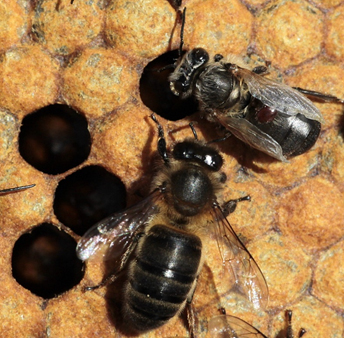
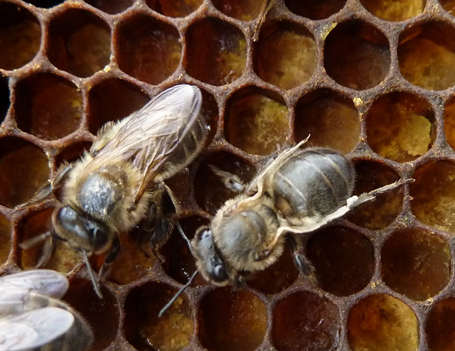
The next most significant pupae virus is sacbrood virus, SBV. It causes death in bee pupae, affecting their insides, but not their skin, making them look like sacs filled with thick, dirty, brown liquid.
Until a few years ago, it was rare to see pupae die from this virus, but it has increased notably in recent years. It is highly linked to the presence of varroa mites, as are all viruses, but also to
nutritional deficiencies due to poor flowering periods and excessive numbers of hives in the colony.
Affected pupae die, causing the capped brood to look "holey", as they tend to be extracted by worker bees, which also spreads the virus. It is very apparent in the cells that bees are uncapping due to their cleaning instinct, or in those that have already been uncapped. Fine-point tweezers are helpful for removing the affected pupae.
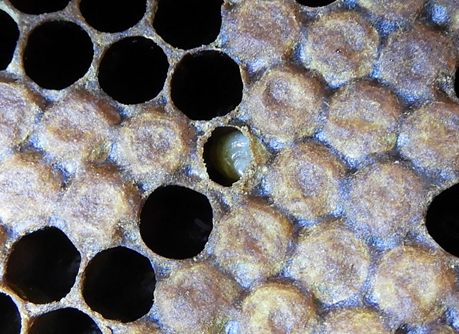
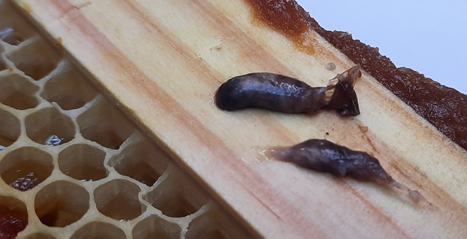
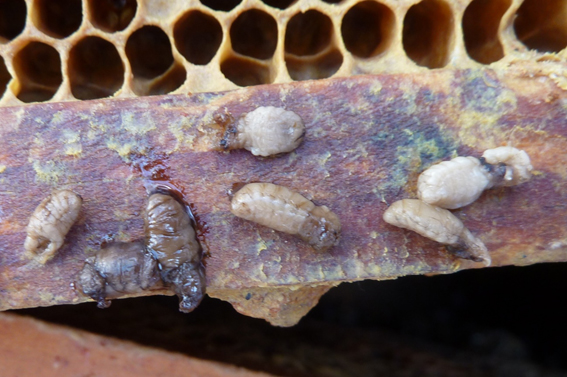
Finally, another virus that is on the rise in our apiaries is black queen cell virus, BQCV. It attacks only queen pupae, which perish without fully developing. Affected pupae turn yellow, then dark brown and finally black, leaving dark coloured stains inside the cell.
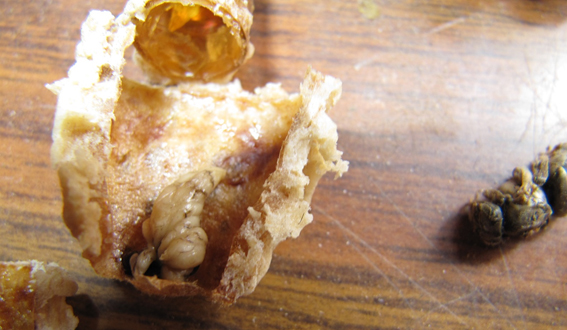
Queen breeders remove these hives from the production process.
Adult bee viruses.
The main viruses that affect adult bees are acute paralysis virus, APV, and chronic paralysis virus, CPV. Data has been published in other countries showing an increase of these viruses in recent years, as we have seen in Spain.
Like the others, they are linked to the presence of varroa mites, and/or to severe nutritional problems or excessive numbers of hives in the colony.
They can be identified by the presence at the entrance to the hive and in the honeycomb of bees that initially lose mobility of their back legs, part of the hair on their thorax and on the edges of the abdomen, and turn black; they tend to be rejected by the bees in their hive. In the end, they cannot move and they turn totally black, and die in front of their hive.
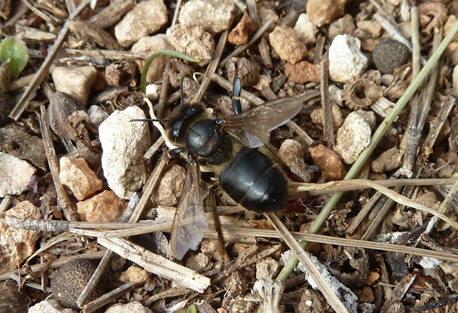
To learn more:
Diversity and Global Distribution of Viruses of the Western Honey Bee, Apis mellifera. Review. Beuperaire et al. Insects 2020, 11(4), 239; https://doi.org/10.3390/insects11040239